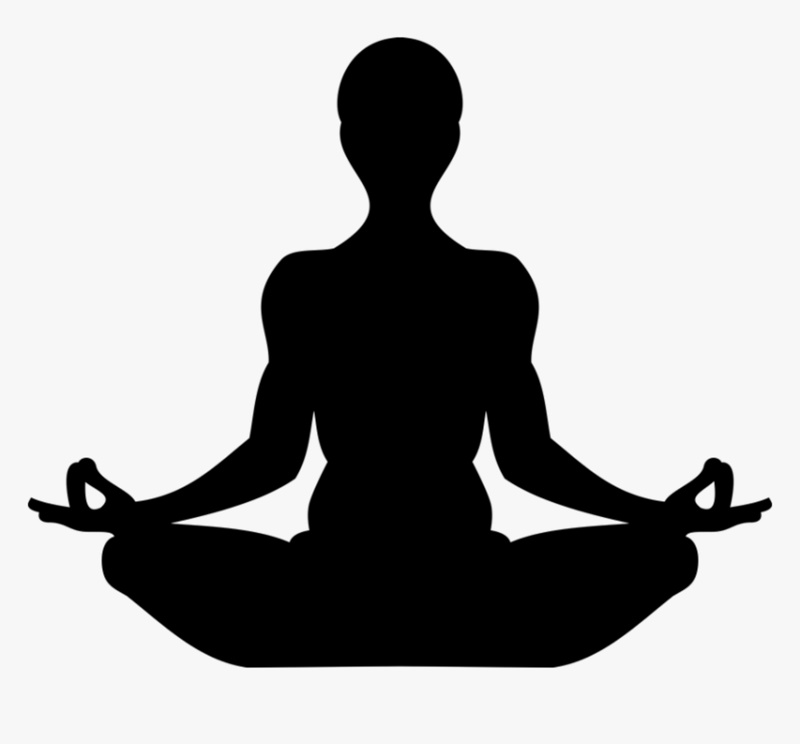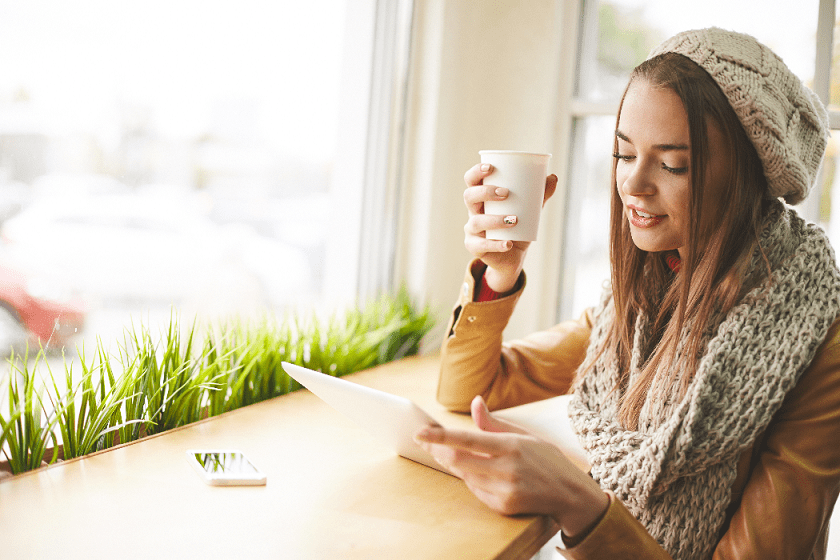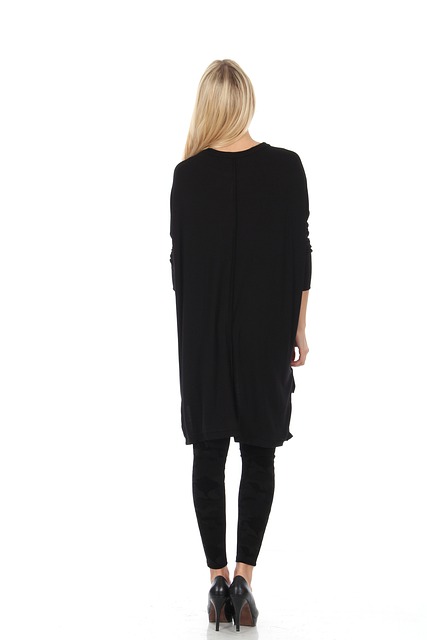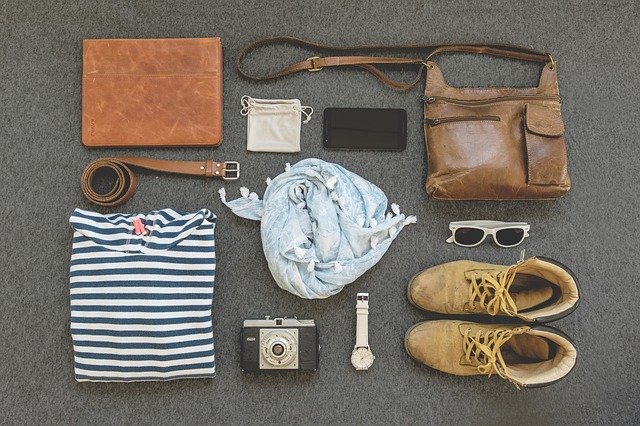
We all experience stress in our daily lives, but for people with scoliosis, stressful and upsetting feelings are often intensified.
Today, we’re going to look at the different stresses commonly faced by scoliosis patients to establish why they occur and how we can help our patients to fight them.
Body Image
Scoliosis can have a noticeable effect on the way your body looks. Uneven hips and shoulders are a common symptom and can leave you feeling uncomfortable in your own skin.
Many scoliosis patients are young children or teenagers (this is when idiopathic scoliosis most commonly develops), so patients often feel ‘different’ to their friends and peers. Children can be really cruel and are known to exploit anything that makes other children ‘stand out’, so bullying and teasing can be a real problem.
A lot of people with scoliosis think their curve looks much more dramatic than it actually does! But nonetheless, body image can be a real cause of stress.
How Does Scoliosis Affect Your Body Image? Body Image Research: View Our Infographic
Managing Body Image Stress
If you’re unhappy with the way your scoliosis makes you look, there are steps that you can take. Our exercise-based treatment courses are a great way to develop your confidence while reducing the visibility of your curve.
We use a combination of different methods (including the Schroth Method and the FITS Method) to make your body more symmetrical and to improve your posture and strength. These exercises can be repeated at home and, if practised regularly, can help to reduce body image stress.
When you visit the Scoliosis SOS Clinic, you’ll meet a group of other people with scoliosis, many of whom are also struggling with their body image. Talking to these people who are going through the same thing as you (and may even look very similar to you) can really help you to manage the stress around your body image.
Book a Consultation >
Surgery Stress
Another stress that people with scoliosis often face is directly related to the fear of surgery. Spinal fusion is a daunting and invasive procedure, and while complications are rare, risks do exist.
Other surgery-related stresses include:
- Missing school and events
- How your surgery scar will look
- Pain and the recovery process
But the stress associated with scoliosis surgery can be avoided. Many of the patients who visit our clinic choose our exercise-based therapy as an alternative to spinal fusion surgery, and they see significant improvements! We have helped scoliosis patients from all over the globe – if you want to hear some of their incredible stories, click the button below.
Scoliosis Patient Stories >
We also work with patients who have recently had spinal fusion surgery to reduce stress and speed up the recovery process. Learn more about this here.
If you have any questions about our treatment plans, or if you need help coping with scoliosis stress – reach out and get in touch! We look forward to hearing from you.

We’ve previously talked about the relationship between yoga and scoliosis and how yoga is sometimes used as a form of scoliosis treatment due to its ability to create proper alignment within the body whilst reducing pain. This is achieved by placing focus on a number of key parts of the body, including:
- Strengthening the feet and legs (to relieve the burden placed on the spine)
- Straightening / lengthening the spine
- Aligning the lower limbs with the torso for improved function
- Addressing the rounding of the back
- Strengthening core muscles to prevent the back from tightening
- Incorporation of breathing awareness to improve structural alignment
However, despite all of the benefits associated with yoga, scoliosis patients who wish to take up yoga need to be cautious of the potential dangers that also exist. This is particularly the case for yoga classes that do not cater to the demands of scoliosis sufferers, as scoliotic spines do not always behave in the same manner as straight, healthy spines.
In order to ensure that your condition is improved rather than worsened, take a look at our recommended best (and worst) yoga poses for people with scoliosis.
The best yoga poses for scoliosis

Cat/Cow Pose
At the beginning of a yoga session, it’s important to focus on loosening the spine with breathing. The cat pose is a great exercise to help with this. To perform it, kneel with the hands below the shoulders and the knees below the hips. Whilst inhaling, lift the head and tailbone, making the lower back concave. Exhale and tuck the tailbone, rounding and releasing the neck. Repeat this for a total of ten times.

Warrior Pose
This pose strengthens and stretches the legs, psoas and back muscles and should be performed with the support of a door jamb or pillar in order to keep the torso upright and balanced. To perform the warrior pose:
- Bring your back to the edge of the door jamb with the front heel about two feet ahead and the front leg hugging the side of the wall.
- Place the back toes around two feet behind the left hip. Square the two hips so they are parallel to each other and point the tailbone to the floor, lengthening the sacrum.
- Inhale and bring the arms overhead parallel to the shoulders (with palms facing each other) and lift from the upper back, lengthening the ribs and spine out of the pelvis.
- Exhale and bend the right leg, creating a right angle, with the thigh parallel to the floor and the shinbone perpendicular to the floor. The right knee should be placed directly over the right heel, with the left leg fully extended and the left heel descending to the floor.
- Continue to lift the spine, and at the same time, press into the floor with the back leg.
If you have trouble bringing the back heel to the floor, place a sandbag under the heel for balance. Pressing it back and down to the floor helps to penetrate the deep psoas muscle.
Inversions
In a healthy spine, the continual pull of gravity can compress the intervertebral disc and eventually cause nerve damage or disc herniation. If you have scoliosis, this issue is even more pronounced. Scoliosis sufferers will tend to feel the uneven pressure of gravity constantly but have no understanding of how to create alignment to alleviate it.
Inversions are a perfect way to create freedom in your body to experience alignment without the usual distortions caused by gravity. As a result, it is often easier – particularly if you have been diagnosed with scoliosis – to feel what alignment is upside down than while standing on your feet. Inversions are also a great way to develop strength in the back and arms, increasing circulation to the vertebrae, brain and other major organs as well as encouraging lymphatic circulation and venous blood return.
The worst yoga poses for scoliosis
Back-bending poses
Bending a scoliotic spine backwards will reduce the normal front-to-back thoracic shape, also known as kyphosis. This ‘regular’ part of the spine works to limit the progression of scoliosis, so emphasis should be placed on encouraging this shape rather than reducing it. Back-bending positions flatten the thoracic spine which can lead to destabilisation, making scoliosis worse.
Back-bending poses include:
- Cobra
- Half-moon
- Bow pose
- Camel
- Wheel
- Locust
Torso-twisting poses
Unless you’re certain it will not aggravate the rib arching, scoliosis patients should avoid twisting the torso against the pelvis. The rib arch is increased as it rotates backwards into the existing curvature, regardless of whether the rotation is to the left or right side. Some forms of scoliosis can accommodate these types of twists in a yoga programme, but only to one side.
It’s important to communicate with your practitioner before incorporating these poses into your yoga routine:
- Spinal twist
- Triangle
- Seated twist
- Sage twist
Bending the rib cage
Bending the rib cage backwards, forwards or sideways should be avoided at all costs. Trying to open up the main scoliotic curve between the thoracic (upper) and lumbar (lower) spine may improve the major thoracic curve, but you will risk worsening any curvatures above or below that curve.
The poses to avoid are:
- Side bend
- Triangle
- Seated twist
- Sage twist
These are the best and worst yoga poses for people with scoliosis. Here at the Scoliosis SOS Clinic, we provide award-winning, exercise-based scoliosis treatment courses that aim to strengthen the muscles and increase the range of motion in the back, frequently eliminating any need for surgical intervention. We have treated patients of all ages from all over the world.
Treatment FAQs Book a Consultation

Detecting scoliosis in its early stages is important if you want to halt its progression and minimise the severity of the symptoms. This raises the question: should we be screening for scoliosis in schools?
School screenings aim to detect the minor deformities that often go unnoticed by general practitioners but which can point to a possible curvature of the spine.
Family doctors don’t tend to carry out routine checks for scoliosis, so symptoms are often left untreated until the curvature becomes more prominent or the patient starts to experience pain – an outcome that could potentially have been avoided with early detection. Unfortunately, if the patient’s spinal curve is allowed to develop to 40 degrees (or more), treatment options become very limited.
Why Should We Screen in Schools?
It’s estimated that 3 or 4 children out of every 1,000 in the UK need to be treated for scoliosis – and with over 8.7 million pupils in schools across the UK as of 2018, you can imagine how prevalent this condition really is. Adolescent idiopathic scoliosis tends to develop while children are aged between 10 and 15, so screening at this time could well help to reduce the number of adults suffering with severe scoliosis in this country.
If it’s caught early, exercise-based therapies like our ScolioGold treatment programme can be used to prevent scoliosis from getting worse (even helping some patients to avoid invasive spinal surgery).
Interestingly, in the past, the UK did screen for scoliosis in schools. This was a fairly common practice up until the 1990s, but it was eventually abandoned.
Researchers Muhammad Ali Fazal and Michael Edgar from the University College Hospital and the London Clinic conducted a study called The Detection of Adolescent Idiopathic Scoliosis and were able to ascertain that:
“In the year 2000, only 8% of patients with scoliosis had been identified by school screenings compared to 32% in 1985. Similarly, the number of patients presenting with curves over 40° increased to 70%, showing that untrained eyes are only capable of identifying spinal deformities at a later stage.”
These findings highlight the important role school screenings can play in preventing debilitating cases of scoliosis. So why aren’t we employing a national scoliosis screening strategy now?
Concerns About Screening
There have been a number of petitions to bring scoliosis screenings back to UK schools. Unfortunately, none have yet been successful.
The government’s response to such petitions has been largely influenced by the advice offered by the UK National Screening Committee (UK NSC) who, after a three-month consultation, decided that screenings for scoliosis should not be offered. There were several reasons for this decision:
- Firstly, the UK NSC found that there was no standardised or agreed cut-off for the Adams forward bending test where doctors agreed that the child needed treatment. This meant that some children would go on to have further scoliosis tests even though they’d likely have gotten better on their own, while others would miss out on further tests and treatments even as their curvature became worse over time.
- Secondly, the UK NSC expressed a concern that school children might be exposed to harmful x-rays unnecessarily if the Adams forward bending test was not capable of determining the severity of the child’s condition.
- Thirdly (as with everything) cost played a role in the final decision. The UK NSC expressed concern that the likelihood of false-positive diagnosis in relation to the cost of nationwide screening was not justifiable.
These recommendations against school screenings are based largely on outdated and limited data. In our opinion, based on the current data we have, it’s reasonable to recommend that children and in particular adolescents participate in school screenings where both the Adams forward bending test and scoliometry are used.
Does My Child Have Scoliosis? What Should I Do?
If you think your child has scoliosis, or if your doctor has confirmed that your child has a curved spine, we can help you test and treat your child’s scoliosis.
First of all, if you’d like to check your child for scoliosis at home, you can use the Adams forward bending test to check the alignment of your child’s spine. We have a video showing you exactly what to do – you can watch it below.
Remember, no one’s body is perfectly straight and symmetrical, but if you do notice an unevenness that’s out of the ordinary, you should get in touch with your GP right away.
If your child is suffering from scoliosis, there are things you can do to help your child cope with scoliosis while they’re at school. You can read our helpful tips by clicking the button below.
Coping with Scoliosis in School >
We’ve helped hundreds of school children with scoliosis to improve their curved spines. Give us a call on 0207 488 4428 if you’d like to speak to one of our therapists about your child’s condition and potential treatment options.
Scoliosis can have a significant impact on your frame, silhouette and self-confidence. This can make it difficult to find clothes that complement your body – particularly if you have an uneven rib cage, lopsided hips, and/or uneven shoulders.
Layering
When it comes to winter clothes, most people wrap up in warm, cosy layers. This is great news for scoliosis patients who are conscious about showing too much skin or wearing tight-fitting clothes that emphasise their spinal curves. Here are a few winter-appropriate layering options:

1. Padded Blazer
Choosing a blazer with shoulder pads, like the one shown above, is a great way to make your shoulders look more symmetrical. Plus, a blazer adds an all-important extra layer to any winter outfit. A warm, padded blazer can complement dressy and casual outfits; pair it with jeans and t-shirt for a casual look, or a midi dress and heels for a cosy going-out ensemble. However you style it, you can rest assured that your padded blazer will make you feel a million dollars.

2. Chunky Knit Scarves
To make a cosy fashion statement and draw attention away from any differences in your shoulders, you could also opt for a chunky knit scarf. There are hundreds of different options available, so you can choose a scarf that complements your personal style perfectly. Plus, these cosy wardrobe additions will keep you delightfully warm while you’re out and about during the winter months.
Going-Out Wear
Most of us spend our winter days and nights tucked up in comfy loungewear, but you will occasionally have to ditch your pyjamas for a more sophisticated look. Don’t worry, though – there are plenty of scoliosis-friendly options out there. With these simple tips, you can rock the ‘effortlessly put-together’ look while still staying nice and warm.

1. T-Shirt / Jumper Dresses
A loose-fitting jumper dress or tunic can provide a bit of extra coverage for self-conscious scoliosis patients. Jumper dresses are a great option if you have a party, winter celebration or dinner date that you want to look classy for without feeling exposed. Black is always a great colour option – it’s slimming and looks great with every skin tone – but there’s nothing to stop you from expressing yourself with a brightly-coloured or patterned dress. Don’t let your scoliosis hold you back!

2. Accessories
It might sound silly, but choosing the right accessories can really elevate an otherwise plain outfit and make you feel better about the way you look. Bold accessories will help you to express your personal style while drawing attention away from your scoliosis curvature. Choose a large clutch or cross-body bag to balance out a prominent hip, or statement shoes to draw the eye down the body. Accessories can be a great addition to any wardrobe all year round, so choose your winter accessories wisely and you’re sure to feel great.
If you have scoliosis, why not get in touch with the team here at the Scoliosis SOS Clinic? We provide exercise-based treatment courses that can help you to achieve noticeable differences in your appearance. Contact us today to find out more.
